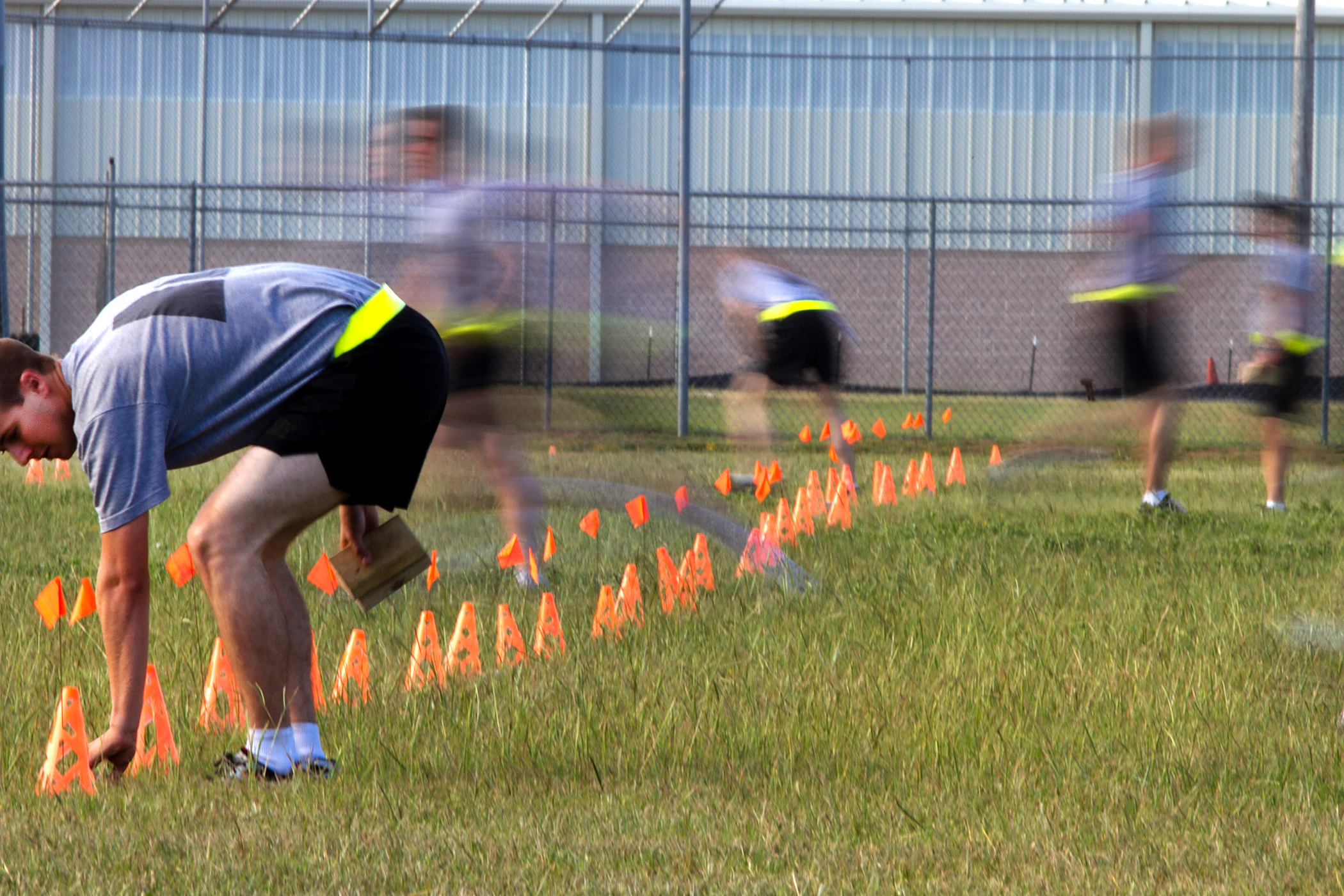Anaerobic training specifically develops the two anaerobic energy systems and often develops power, strength and speed in the process. More recent research also says that anaerobic training can improve the athlete’s aerobic endurance. Anaerobic training affects performance by increasing the rate at which the muscle deals with pyruvic acid and removes lactate from the muscle. This increases the lactate inflection point. Anaerobic training also improves the recovery rates of the anaerobic energy systems and has the potential to increase PC stores. Anaerobic training will speed up anaerobic glycolysis allowing for ATP to be produced at a faster rate than an untrained athlete. This affects performance by allowing the higher intensity activities to be performed for longer, improving recovery allowing for a repeat in this intensity to be performed quicker and for an extended duration, and improvements in strength, power or speed allow for further and faster throws and kicks.
Short interval/Anaerobic training involves a single activity with specified changes in intensity at specific times or lengths within the session. The difference between this training and aerobic/long interval training is the length of time at the higher intensity is usually shorter than the time at the lower intensity, though the intervals can be the same. This could be 100m sprints followed by a 100m jog, or a 2 minute sprint followed by a 1 minute walk. Short interval anaerobic training will usually be used to develop the lactic acid energy system, but if the higher interval is shortened and the rest period prolonged the focus will shift to the alactacid system. This could be an 8 sec sprint followed by a 60 sec rest. You know which energy system is being targeted by looking at the duration of the energy system and the rate of recovery and comparing these to the intervals in the training session. Short interval anaerobic training is best suited for sports that require frequent high intensity bursts, with some rest periods in-between. These include sports such as: netball, basketball, futsal, rugby league, and boxing.
Other examples of anaerobic training methods include resistance training and plyometrics. Resistance training can be modified to improve power, strength or lactate removal rates. Plyometrics involves a stretching of the muscle followed by a rapid and more powerful contraction. It is used to develop power. For further information please see strength training below or resistance training in Improving Performance.

